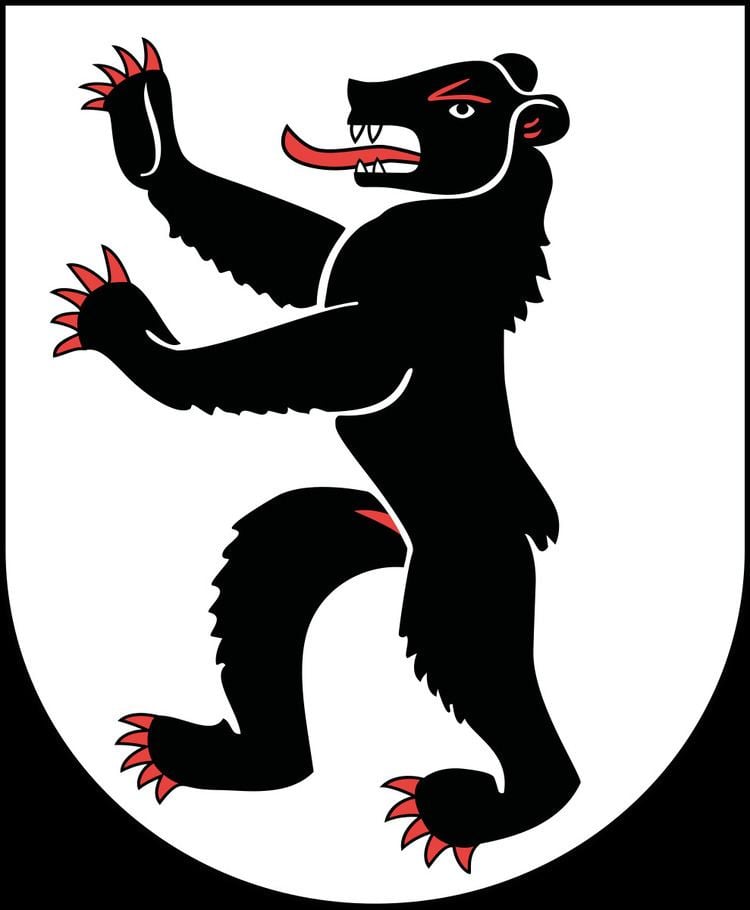 | ||
The bear as heraldic charge is not as widely used as the lion, boar or other beasts. It occurs mostly in canting arms, in England in the familial coats of arms of Barnard, Baring, Barnes, Bearsley, etc. In English heraldry, a bear's head usually muzzled, is the more commonly used charge than the whole beast. Also canting, but associated with a legend built on a false etymology of the city's name, is the bear in the coat of arms of Berne.
Similar to the coat of arms of Berne is the bear in the coat of arms of Berlin is used cantingly. The bear appears in representations of the Berlin coats of arms in the early modern period, used alongside the Prussian and Brandenburg eagles until the early 20th century.
The bear is also used in arms representing Saint Gall, based on a legend of the saint involving a bear. This is the origin of the bear in the coat of arms in the Abbey of Saint Gall and of Appenzell. The bear of Appenzell is represented pizzled; omission of the bear's penis from the coat of arms of Appenzell was seen as a grave insult, notoriously, it had been forgotten by the printer of a calendar printed in Saint Gallen 1579, which brought Appenzell to the brink of war with Saint Gallen.
The saddled bear of Saint Corbinian's legend is the heraldic symbol of Freising, Bavaria, and the Diocese of Munich and Freising. Pope Benedict XVI, former archbishop of Munich, also applied it in his Papal Arms.
Modern civic heraldry
A demi bear appears in the crest of Lawson in Canada. A grizzly bear, with wings, appears as a supporter in the bearings of Norris also in Canada. Canada has armigers with polar bears in their bearings. Chimerical half-bear, half-ravens appear as supporters of the Canadian Heraldic Authority.
Civic heraldry in Warwickshire abounds in bears. A bear is also used, cantingly, in the arms of the Berwick-upon-Tweed Borough Council.
